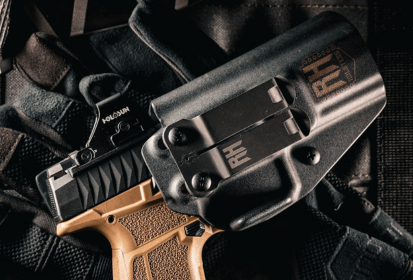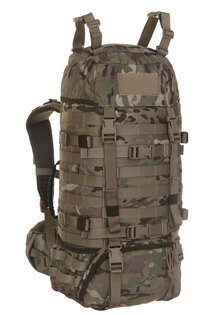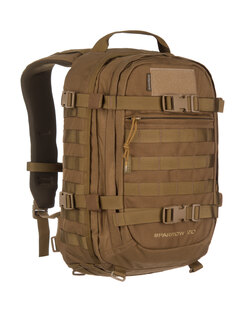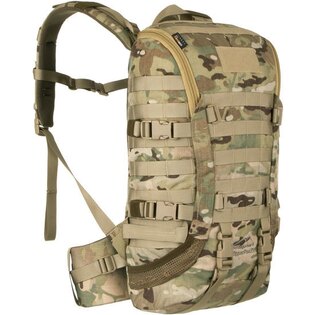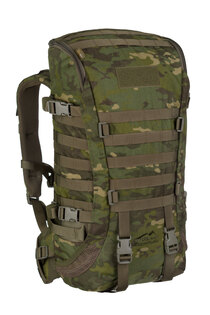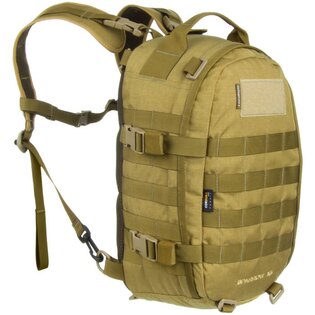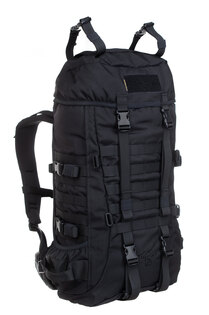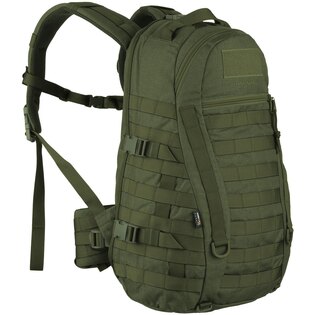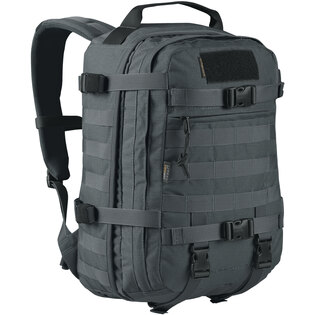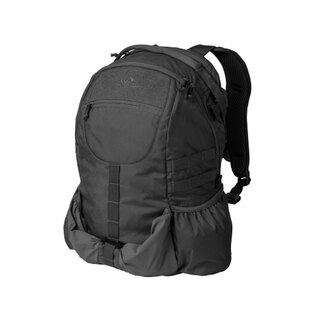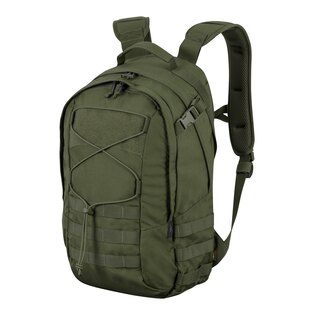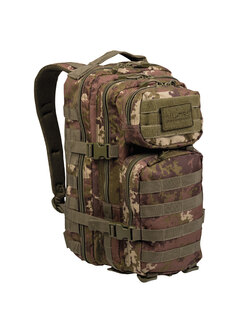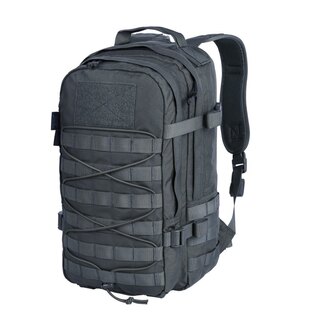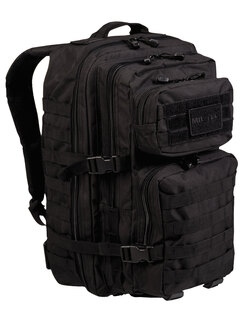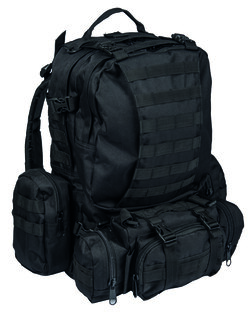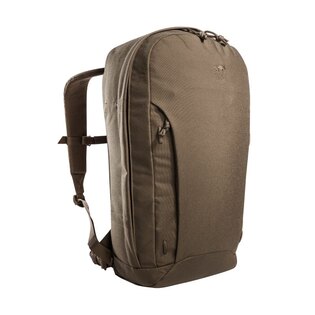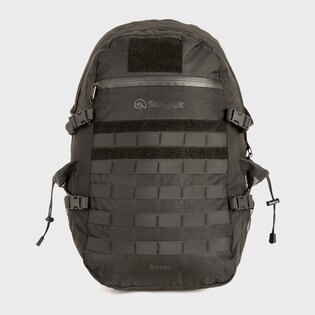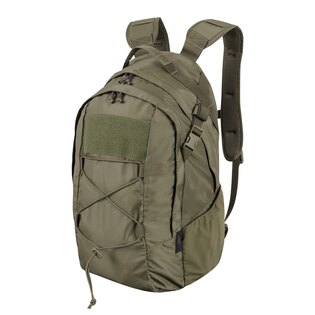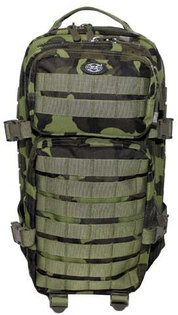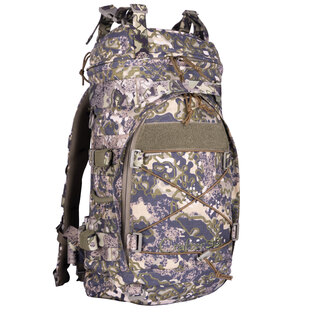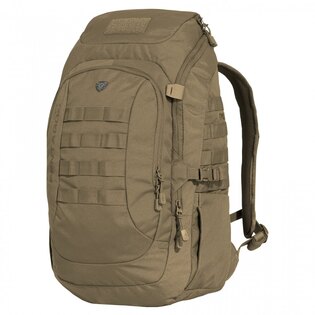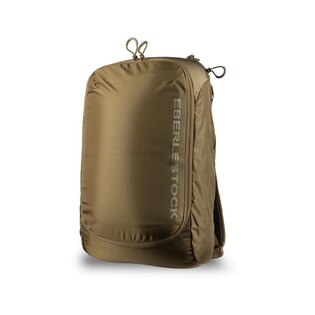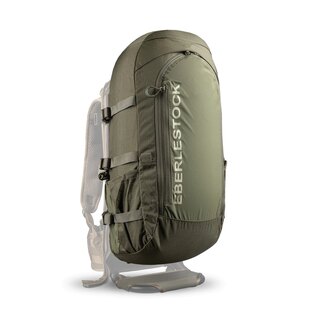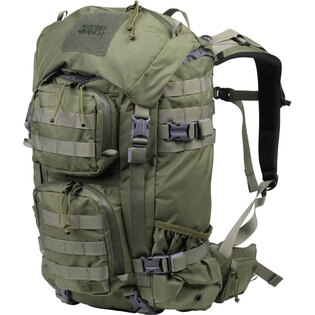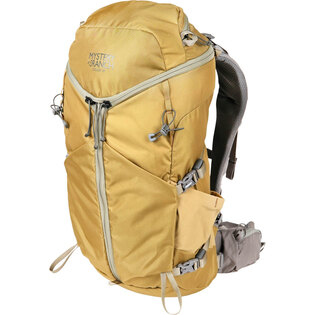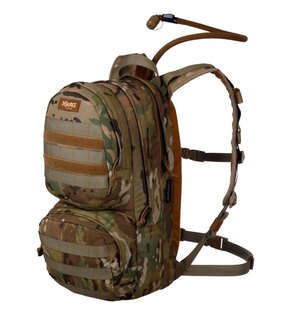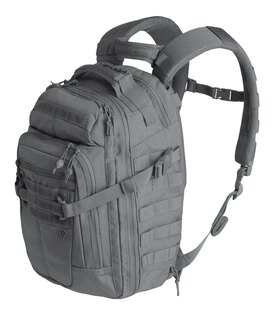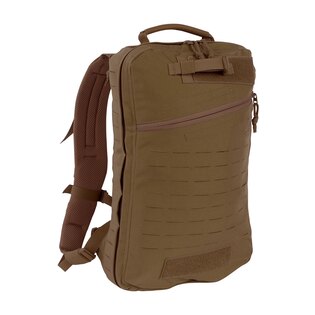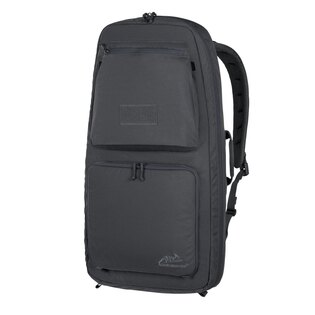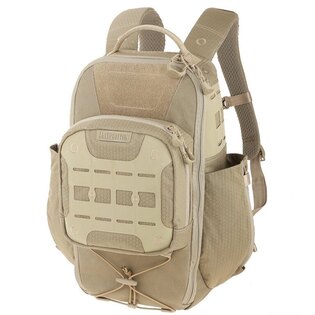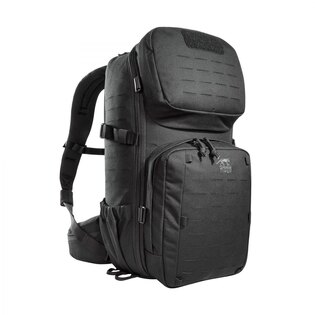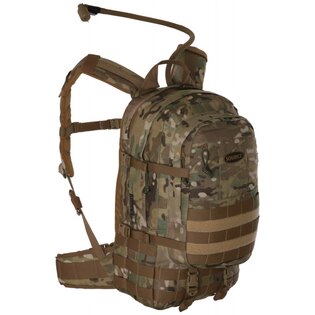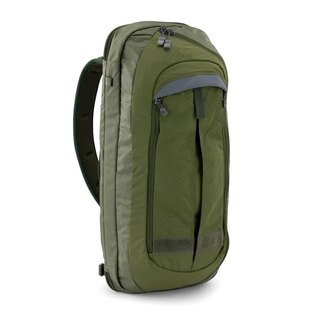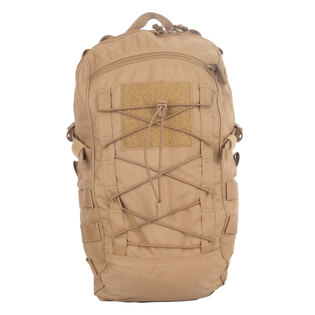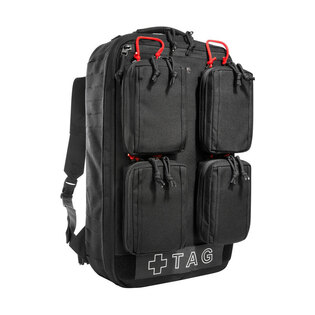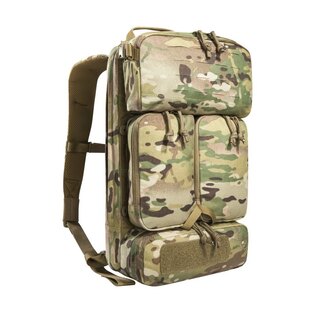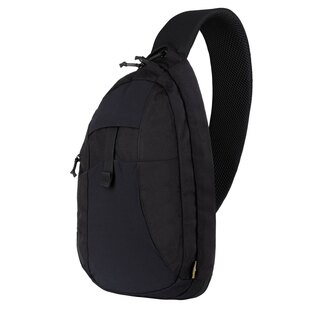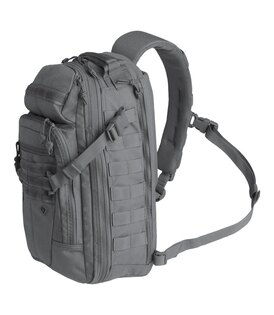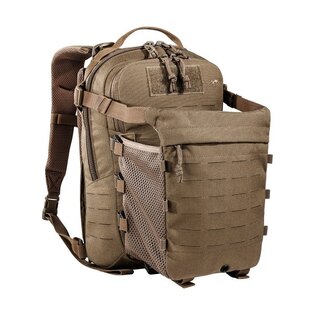Ideal backpack for a trip? No problem!
For any outdoor activity for which you need more items than you can carry in your pockets, you need a small backpack for trips, also known as a "One-day backpack". Even though these products look quite similar from the outside, each is made with a specific purpose in mind. Each one will help you optimally in a different situation.
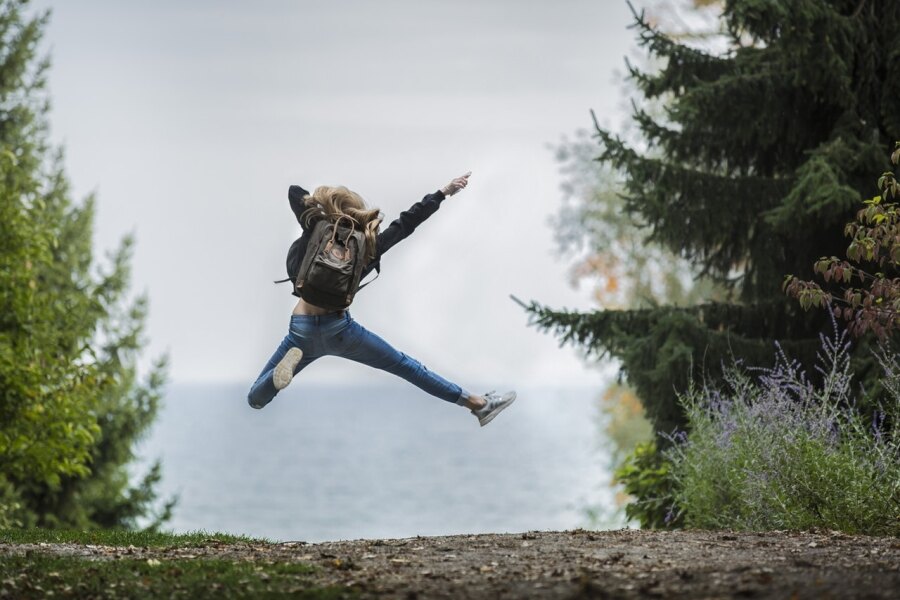
Even though smaller backpacks for one-day trips are more suited to shorter walks, experienced woodsmen can venture further. However, they will also need a range of basic equipment, without which it simply won't work (first aid kit, emergency kit, spare dry clothes, ...).
What mainly determines your choice of backpack for trips? These four things:
- Your specific planned activity – how you will use the backpack for day trips will have a big impact on which features will be ideal for you.
- Your required backpack capacity for trips - the size of the luggage you can / must / are willing to carry will directly affect how much equipment you can carry with you.
- The features and functions you require in your new backpack for trips - things like necessary back reinforcement or ease of access will make a big difference.
- How well the given backpack fits you for trips will affect the result a lot, and here again the main factor in the game is the size of your back. It's the most important factor, because what good is an otherwise awesome backpack if you can't take two steps, let alone two walks with it?
How to choose a backpack for trips according to activity?
A quick and proven way to considerably reduce the number of all models on the market to a much smaller amount is to look for a backpack for trips that is primarily designed by its manufacturer for a specific type of activity.
Here are the basic sports and outdoor activities around which certain backpacks for trips are built and we will also mention what special features you will find in them because of this.
Backpacks for trips, hiking, and walking travel
Practically all backpacks for trips are compatible with hydration reservoirs / camel-bags. Each of them has large side pockets on both sides, where you will find at least two compartments for water.
Similar backpacks for trips also exist in many designs, so you can choose a specific one according to the size of your back (you measure it by measuring the spine between the last cervical vertebra and the pants on a person standing straight, thus obtaining the optimal backpack size).
Backpacks for trips and climbing mountains and rocks
They have a tapered profile, so they practically do not obstruct movement on rocks up and down, unlike others.
The overwhelming majority of backpacks for trips intended for rock climbing also have padded backs, or possibly a solid material in the back area that serves as a shape fixation and a soft pad for your back (thanks to it, the weight is better distributed centrally).
Backpacks for trips to the rocks always include special features such as storage space / loop / attachment for an ice axe, crampons, possibly a lamp, helmet, …
You will definitely appreciate the heaviest materials and workmanship in your backpacks for trips and mountains - thanks to this, any possible damage from abrasion against rocks and trees is minimized (abrasion).
Some backpacks for trips and mountain climbing will also hold skis and snowboards for you.
Backpacks for trips and running
As for daypacks for trips and running, they certainly surpass other items that can be worn by runners in terms of functions: small packs just for water located in the chest area, running vest, …
All these types are usually designed to maximize the reduction of bouncing during your run and logically eliminate constant jabbing into your back.
Pockets on running backpacks for trips are positioned in such a way as to allow you easy and immediate access to the contents – snacks, water, …
The vast majority of backpacks for trips primarily intended for running are completely compatible with hydration packs.
Backpacks for trips and primarily for traveling, school, and commuting
A range of backpacks for everyday travel usually includes additional special features for advanced and above-average organization of all your carried items: dividers, sections for a laptop, the same compartments and large pockets + spaces for really small items.
Many of the backpacks mainly intended for commuting and traveling additionally have a front opening instead of a top opening.
Some travel backpacks for trips have double zippers and compartments for travel locks. Also, some of them allow you to remove the straps so they don't get caught in escalators at the airport.
The majority of the backpacks for trips mainly aimed at travel meet the parameters of luggage that you can take on a plane.
Even though travel backpacks are mainly made for regular trips for students anywhere, they also work well for commuting to work.
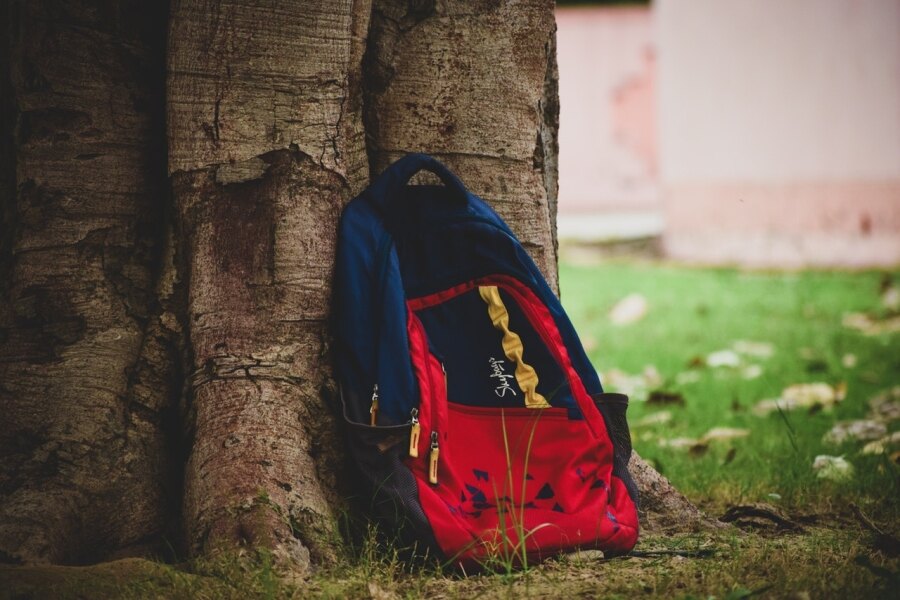
One of the options for choosing a color for your new hiking backpack is to pick something from the survival kit that will be easily visible to rescuers. On the other hand, if, for example, as wildlife photographers, you do not want to be seen, then choose differently, of course.
Backpacks for trips for cycling and mountain biking
Most similar types of backpacks have a compact low profile, so they are both lightweight and stable, and lastly, they exert practically no resistance on your back while cycling.
Bags for trips for all cycling are often slightly larger than other similar types. The reason is, of course, to accommodate all the items intended and necessary for the bike: repair tools, clothing for you, ...
Some cycling backpacks are designed as "cycling-commuting," so they have features and layout similar to the travel backpacks mentioned above: dedicated space for a laptop, etc. etc.
Almost all primarily cycling backpacks for trips have straps positioned so they do not interfere with your pedaling.
Many cycling backpacks for trips are also compatible with hydration packs / camel bags.
Backpacks for trips and snow sports
Most ski trip backpacks have a narrow profile, so they do not get in the way when you move in any way on skis.
Chest strap and belt fastening are essential here, otherwise backpacks for trips and snow sports move around a lot.
All of the backpacks primarily intended for snow sports (except for the very smallest pieces, of course) will allow you to carry skis, a snowboard, or ski boots on them.
With this type, parts where they come into contact with the edges of skis or crampons are often reinforced.
Most backpacks for trips/snow sports also have a safe storage place where you can put a snow shovel or probe.
A significant portion of them are also compatible with hydration bladders and offer special insulation, so the water in them does not freeze.
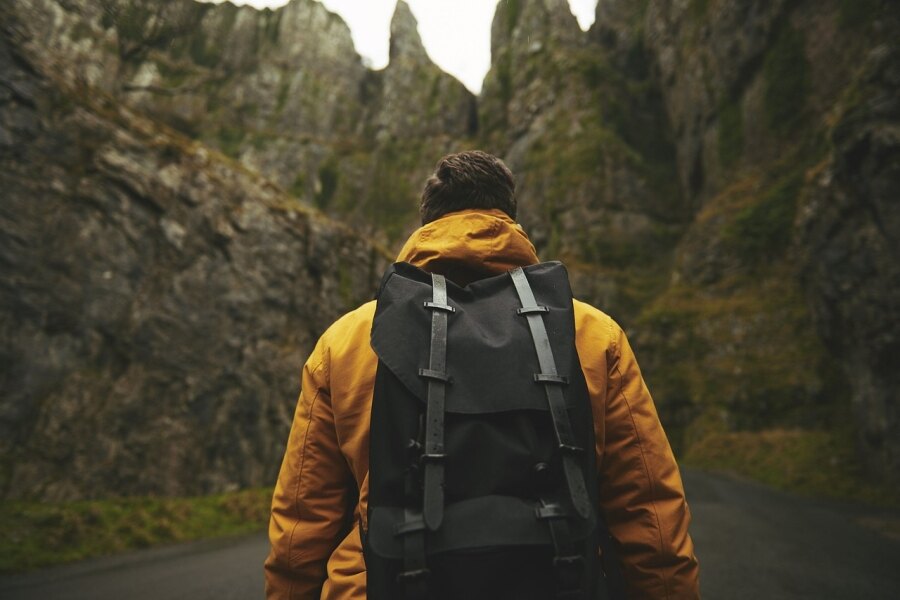
Even the smallest backpacks are still backpacks, so roughly the same principles apply to them as to their larger counterparts. For example, they should not pull anywhere, they should have the option to adjust the length of their straps at least partially, they should not ruin you, they should be useful to you in more than one way,...
Backpacks for minimalist trips
If you adhere to a minimalist philosophy, we surely don't need to remind you that what an average person can fit only a portion of their belongings into, you can fit everything and still have some space left.
Even for minimalists, it’s easier to travel when they have some basic gear, especially in winter: it's always appreciated for any hiking backpack to have reinforced back support (so it's possible to carry really heavy things for a while) and reliable waist and chest straps.
Backpack for minimalist trips is also perfect for people who like to travel in a "hut-to-hut" style. Precisely because a person doesn't unnecessarily carry all their gear, they often get further and are also fresher in the evening.
How to choose a backpack for trips based on the capacity in liters?
As for the capacities of backpacks for trips, it varies greatly. Therefore, you can understandably choose exactly the model that fits you best in terms of content – but this will logically require thorough consideration on your part and realization of what might be useful to you now and in the future (a list of things you would normally like to carry in the given backpack for trips will greatly help in your decision-making).
Certainly, it should also always be big enough for a mirror (signaling and parasites), a small first aid kit (you can even add a few pills), a compass (finding your way in the cloud without a solar GPS is not easy), and an emergency kit (it is useful always and everywhere, plus it is ingenious because when you are missing any small item, you know you will find it right here!).
So, what are the approximate capacities available on the market, in terms of backpack contents for trips?
- 10 liters or less - most ultralight backpacking models are built to keep the weight as low as possible at all costs. So you will appreciate them most on short trips, whether on foot or by bike. They don't have the capacity to commute anywhere. Even in these small spaces, you can squeeze a lot of things: for example, a poncho in case a shower comes, a light jacket, the basic things above, keys, some energy bars, or jerks,…
- 10-20 liters – these types of daypacks, on the other hand, are built to satisfy day-trippers of all types: casual hikers, hot-bike owners, runners, or other light travelers. In the sizes of 10-20 liters of content, we find additional pockets that will help you manage your things in the most organized form possible. Extra capacity = extra food and dry clothes.
- 20-35 liters - this is the golden middle class of all daypacks for trips. There is already enough capacity to comfortably carry things such as additional food, water, clothes and extra things of interest to you: hub atlas, camera, ...
- 35-50 liters - even with daypacks for trips, you sometimes need more space, and a backpack with a capacity of 35-50 liters will usually offer you more than enough. It is ideal even for the most difficult routes that you might expect in the mountains. It is also an ideal choice for parents who have to carry not only things for themselves, but also their little ones. And if you have ultra-light things, you can spend the night with them in a field somewhere.
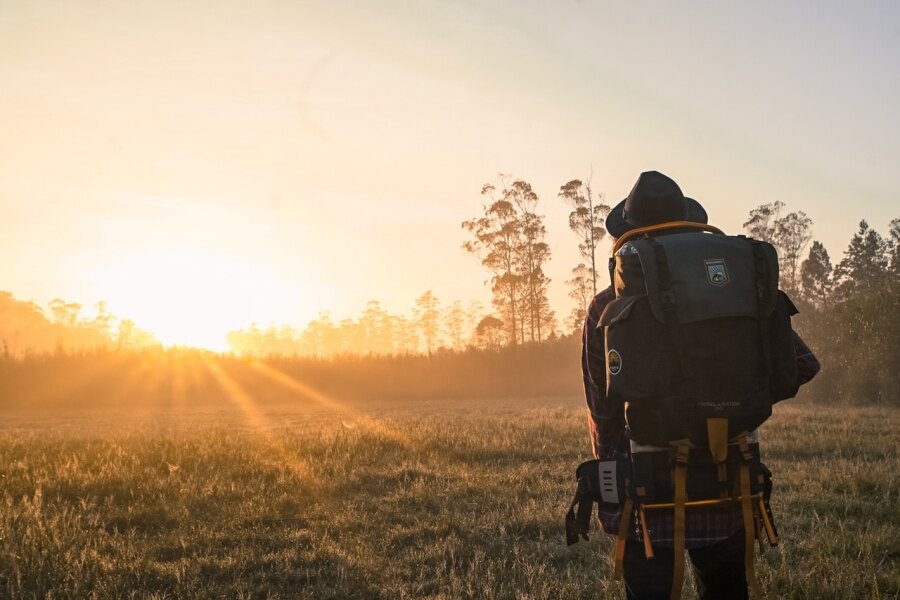
Generally speaking, you don't have to worry much about rain and snow, because small backpacks for trips can be very luxuriously hidden under any raincoat, jacket, or poncho. A waterproof section for VIP items (money, documents, mobile, maps, other equipment, ...) is always necessary.
What functions can a modern backpack have for trips?
As for backpacks for trips and their available features, the first thing you usually notice is that some have supportive frames and others do not. Many models have some form of support for the weight you are carrying. Some choose plastic materials, so they are not too heavy. However, there are models that have opted for aluminum, which makes them a bit heavier, but the fact that the backpack (and therefore you) can comfortably carry more weight can be reassuring.
There are also day-trip backpacks on the market without this construction. These are, of course, much lighter and more compact compared to the first version, but they are often so small that they offer practically no back support. For small backpacks (in terms of capacity), this does not matter, but the larger the backpack in terms of capacity, the more you will feel the lack of support on your back. In other words – backpacks without support are fine, but only up to a certain size...
Another very important element of all backpacks for trips is how you as customers will approach them and open them.
- From the top - the vast majority of daypacks for trips are filled and logically open from the top. The general rule for those is that you place the things you need more often in it higher, and on the contrary, you put the things you don't need often (or almost not at all - like saving aluminum foil) lower down. Pockets, which allow you to slightly extend and increase the storage space (above the backpack) after unpacking, are sometimes visible, but they are relatively small, so there will definitely not be much capacity here anyway.
- From the Front - Backpacks for trips that can be accessed like this usually have a U-shaped zipper and when you open it all the way, one panel of the backpack falls forward like a big flap. Of course, this is perfect for situations where you are in a hurry and looking for something quickly (looking for a first aid kit, a mirror for a splinter in your eye, etc.).
- From the Bottom – Some of the hiking backpacks on the market allow you to access your belongings not only from the front flip style, but also from the bottom. This is especially useful when you need to find a piece of equipment among other things and don't want to unpack and reassemble your entire backpack for trips. You just open it, take out the thing and close it again without breaking the overall structure of other things around.
- From the side - it is always an additional function and it is practically never the only form of filling your backpack for trips. It's always just another function to fill from above or from the front. Searching for things from the left or right side of the unzipped pocket also has its many advantages, as practically the entire space of your backpack is open to you for trips without having to juggle it all the time as is sometimes the case with backpacks without these features.
Some of the hiking backpacks even have a dedicated space for a hydration reservoir / water bag / popular camel-bag. However, just like with other models, this bag is almost never included when purchasing, but the backpack manufacturer assumes that you might add it yourself.
As for other possible special features of daypacks for trips, many of them also have rain protection / external rain cover (it is only a matter of time before it rains, wherever you are – except in the desert, right...).
Some of the larger and largest backpacks for trips even have their own special space for your sleeping bag. Usually, it’s an area that you access from the bottom. Travelers with extra light gear can confidently place their sleeping bag here. However, for those who don’t have one, or should a similar need arise, it’s also possible to put anything else here that you would appreciate having quick access to and that would ideally be as compressible as the sleeping bag.
For some backpack models designed for trips, there is also special ventilated padding/rigging on the back, which ensures that the backpack never actually lies directly on your back, which prevents sweating, as there is always some air circulation and ventilation.
How to ensure your backpack fits you on trips?
The correctly chosen backpack for trips should have a size that matches the height of your torso (please do not confuse this with your full height) and sit comfortably across your hips. However, to choose the right one, you need to know your torso length because manufacturers often categorize their models in various ways, typically including variations such as extra small, small, medium, large, and extra large. Occasionally, there is also a children's, women's, and men's version.
When trying on a backpack for trips, adjust the backpack's belt so that it is about 3 cm above your hips. Then check how the shoulder straps fit your shoulders and back. If there is a small or large gap at the top, it indicates that the backpack is too long/big for you. If you can’t put on the straps at all, they are too tight around the shoulders, or they pull anywhere, or after putting them on, the straps are uncomfortably positioned right behind your arms and do not align nicely and naturally with the backpack, then it is too short for you.
Quite a few of the hiking backpacks on the market today offer at least some form of adjustment for a slightly more comfortable fit. This is essential even when you plan to share this hiking backpack with someone who is obviously of a different body constitution. Adjusting certain straps a bit often helps, so try moving all similar buckles (chest strap, waist strap, shoulder straps, etc.) a bit while looking for the perfect position for you.
Readers are further interested
